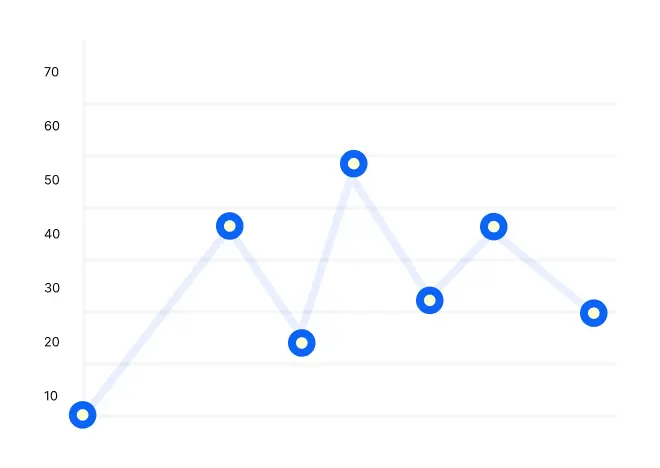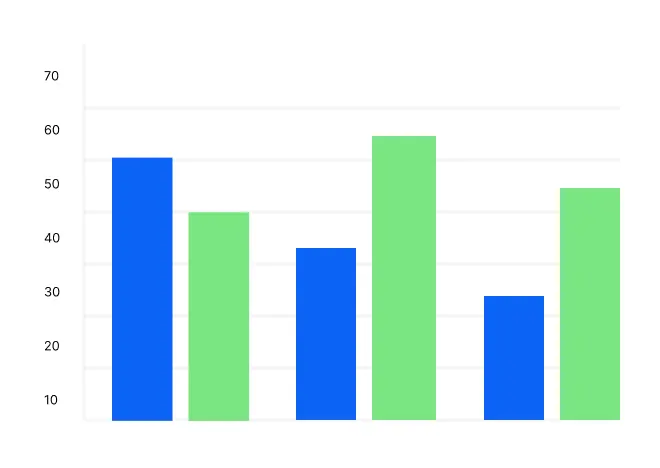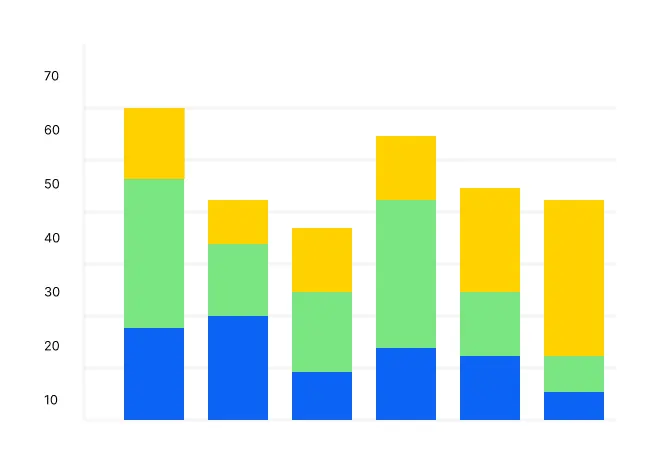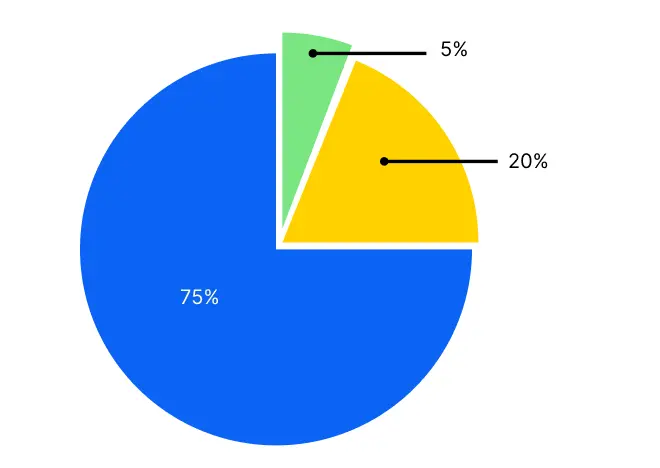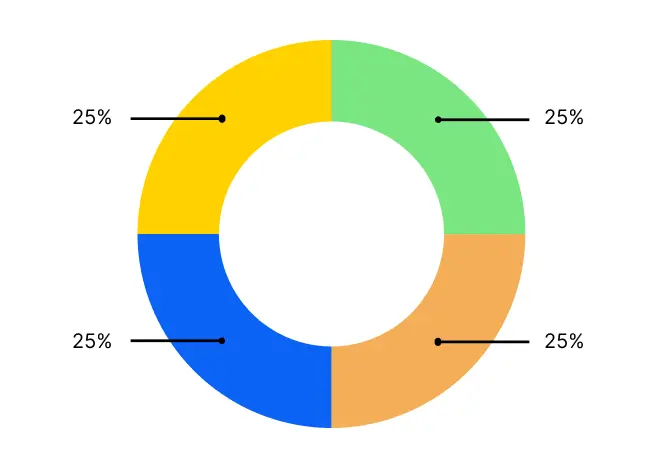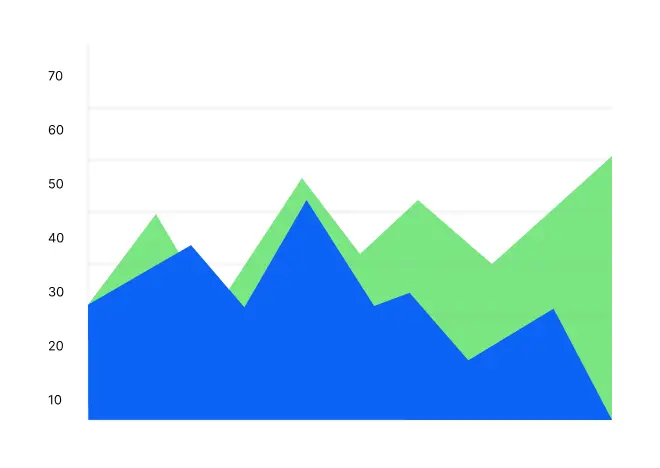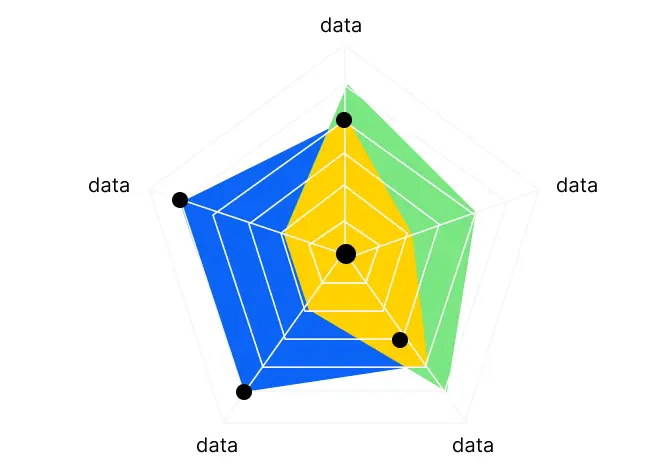Guide to Market Research: Methods, Tools, and Best Practices

Market research is crucial as it provides objective data about the business environment, uncovers new ideas for business development, helps create a unique selling proposition, and aids in budget planning. With precise targeting and analytics before entering the market, you can significantly reduce marketing costs.
This growing demand for market research services underscores its importance. In the U.S., market analysis services from professional agencies can start at around $300,000 for comprehensive projects. Depending on the scope, tailored qualitative or quantitative research usually ranges from $20,000 to $50,000.
Self-conducted market research is a viable alternative if these options are beyond your budget. You can gather meaningful insights to guide your business strategy with the right tools and methods.
Types of Markets
There are several key digital market types, each with unique characteristics, target audiences, and monetization strategies. Here’s an overview of them:
- B2C (Business-to-Consumer): Platforms that sell products or services directly to consumers (e.g., Amazon, Walmart).
- B2B (Business-to-Business): Platforms that offer products or services to other companies (e.g., Alibaba, ThomasNet).
- C2C (Consumer-to-Consumer): Platforms where users sell products or services to each other (e.g., eBay, Craigslist).
Product aggregators also play a significant role in this category by curating items from multiple sources.
Platforms offering software solutions via the internet, with users accessing services through subscription models (e.g., Salesforce, Dropbox, Serpstat).
These are markets focused on digital financial services, including online banking, mobile payments, blockchain, and cryptocurrencies (e.g., PayPal, Square, Binance).
Platforms offering online learning and professional development services (e.g., Coursera, Udemy, Duolingo).
- Streaming platforms: For video, music, and other content (e.g., Netflix, Spotify).
- News portals and blogs: For news, analysis, and long-form content (e.g., paywalls, The New York Times, Medium).
Platforms for promoting products and services online via various channels: SEO, PPC, social media, content marketing, and email marketing (e.g., Google Ads, Facebook Ads, Mailchimp).
Services and platforms for managing and optimizing advertising campaigns (e.g., Google Ad Manager, The Trade Desk).
Other notable markets include Gaming, Social Media, PropTech, and the Internet of Things (IoT). Each of these markets uses specific tools, platforms, and strategies and evolves based on user needs and innovations in the digital space.
Market analysis examines all factors influencing a market’s state and development, such as market size and trends. This research helps identify opportunities and threats, study the competitive landscape, and understand the target audience. It is essential for businesses looking to succeed and grow in their respective industries.
How to Research the Market?
Market research is typically conducted:
- Before launching a business, product, or service. A detailed market analysis should be part of the business plan for launching a company.
- During changes or crisis situations. Helping businesses understand changing consumer behavior and adjust their strategies.
- For scaling or entering new markets. It provides insights into customer needs, the competitive landscape, and potential opportunities for growth.
It's helpful to use a framework like this:
- What does the market buy? (Product)
- Why does it buy? (Purpose)
- Who buys? (Buyer persona)
- How do they buy? (Methods)
- When do they buy? (Timing)
- Where do they buy? (Points of purchase)
- How much do they buy? (Market size)
- How much will they buy? (Development trends)
- Where else will they buy? (Competitors)
Research Objectives
The ultimate goal of the research should be clearly defined from the start. Possible goals might include:
- Media coverage
- Forecasting market trends
- Evaluating customer satisfaction
- Analyzing market prices and product value perception
- Developing new products
- Assessing the effectiveness of marketing campaigns
- Evaluating market risks
- Solving a practical problem
- Increasing brand awareness
- Generating leads or creating demand
The goal should be specific, measurable, achievable, relevant, and time-bound (SMART). Defining this goal will help you focus on gathering relevant data and analyzing the results effectively.
Research Plan
The plan should include a clear allocation of resources and time for each stage of the project. There is a general breakdown into stages as follows:
- Preliminary work (preparing questionnaires, surveys, etc.): 30%
- Data collection: 30%
- Analysis and report preparation: 30%
- Review: 10%
This distribution is the most accurate reflection of reality.
Market Research Tools and Techniques
Typical market research methods include:
- Open data analysis with publicly available data, such as statistics, reports, and studies. It’s a cost-effective way to gain insights into industry trends and consumer behavior.
- Field research with surveys, observations, interviews, focus groups, etc. They provide firsthand information directly from potential customers, offering a deeper understanding of their needs.
- Consultations with experts, thought leaders, and analysts to get strategic advice tailored to your market.
Let’s examine these practical methods, along with their advantages and disadvantages, to help you choose the right approach for your company's market research needs.
Open Source Data Analysis (OSINT)
Advantages: Wide access to information, objective data, cost-effective
Disadvantages: May lack specific information, potential for outdated data
Open source data analysis, commonly known as OSINT (Open Source Intelligence), involves examining publicly available information such as statistics, reports, and research. This data can be sourced from government organizations, survey results, financial reports, and research agency analyses.
You can collect market statistics from specialized marketing services and official websites like:
- National and international statistical organizations
- World Trade Organization (WTO)
- Access2Markets (EU)
- CIA resources for researchers
- Portals of ministries and municipal administrations
- Public databases
- News aggregators by industry
- Foreign resources and websites of international organizations
- Statistical services and platforms (e.g., Serpstat has a dedicated tool for this)
An interesting example is a study we conducted using data from our SEO platform for biz.liga.net:
Source: biz.liga.net

Many statistical agencies share insights on global markets, which can be valuable for your analysis.
Field Research
Advantages: Lower costs, automated data collection, minimal errors
Disadvantages: Lack of personal contact, potentially unrepresentative sample
Online market surveys are one of the simplest and most cost-effective field research methods. Choose a topic relevant to your company, create a study, and collect customer responses. The data gathered can provide immediate, valuable insights that add credibility to your market research.
Typeform is an excellent tool for conducting market surveys and research.
Questions to Ask Your Customers:
Consulting with Experts
Advantages: Expert knowledge, objective recommendations
Disadvantages: Can be expensive, may lack detailed knowledge of your business
Consulting involves seeking insights from specialists, industry leaders, or analysts to gain expert perspectives and advice. This approach helps uncover market nuances that take time to be evident through fundamental analysis.
Various firms offer consulting services in the United States. The cost can range from a few hundred to several thousand dollars, depending on the scope and depth of the market being studied.
Finally, the choice of method depends on the specific market, goals, and resources available. A balanced approach can ensure informed decision-making.
How to Conduct Market Research Independently
You can perform market analysis independently by following these steps:
Case Study: Serpstat for Market Research
Serpstat provides detailed insights into SEO metrics for websites and competitors, helping you discover potential opportunities to improve visibility on Google and Bing.
Key tools for market analysis include SERP Parsing, which lets you assess an industry for launching new products or services, Batch Domain Analysis, which allows the comparison of multiple domains in selected regions, and the new Market Research tool.
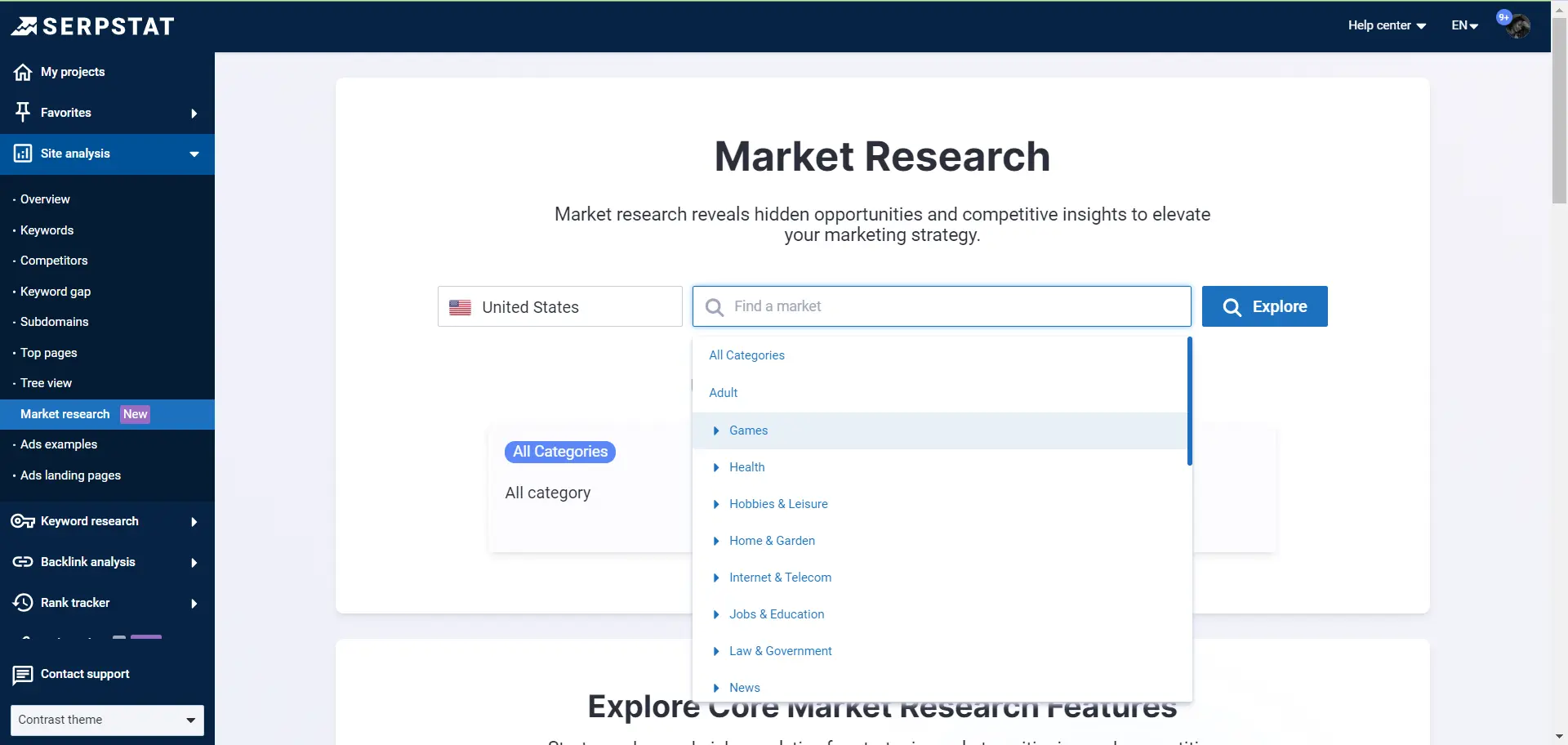
Review competitors’ metrics within your industry, such as visibility, traffic, and keywords. Serpstat’s free plan gives access to the top 20 ranking results, though additional filtering and domain searches require a paid plan.
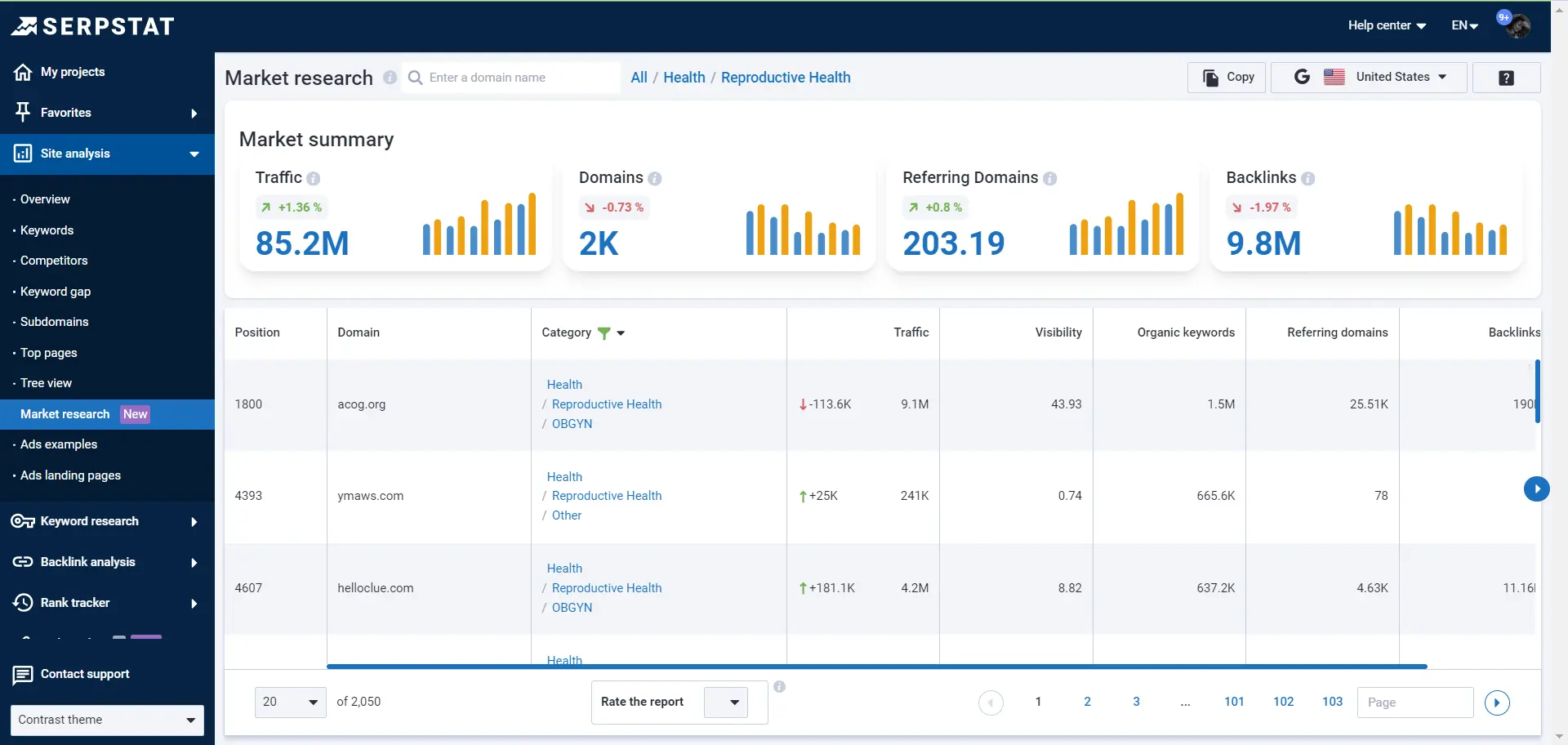
To identify industry leaders, copy the top results and use Batch Domain Analysis to compare SEO metrics across up to five regional markets simultaneously.
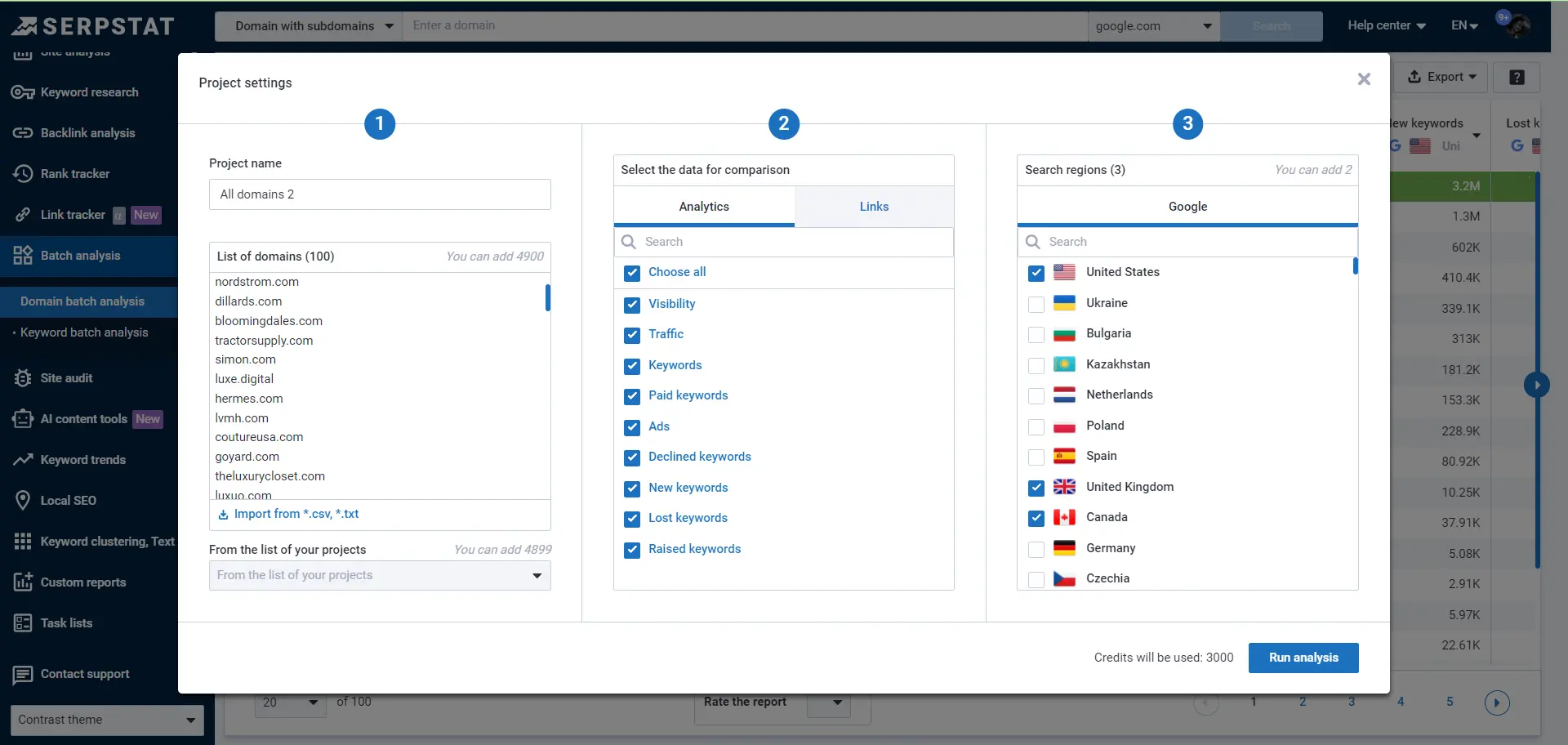
This provides a comprehensive view of the competitive landscape and helps you strategize effectively.
SimilarWeb for Competitive Analysis
This service allows you to analyze competitor traffic using various metrics, including monthly traffic, traffic sources, and the breakdown between organic and paid traffic.
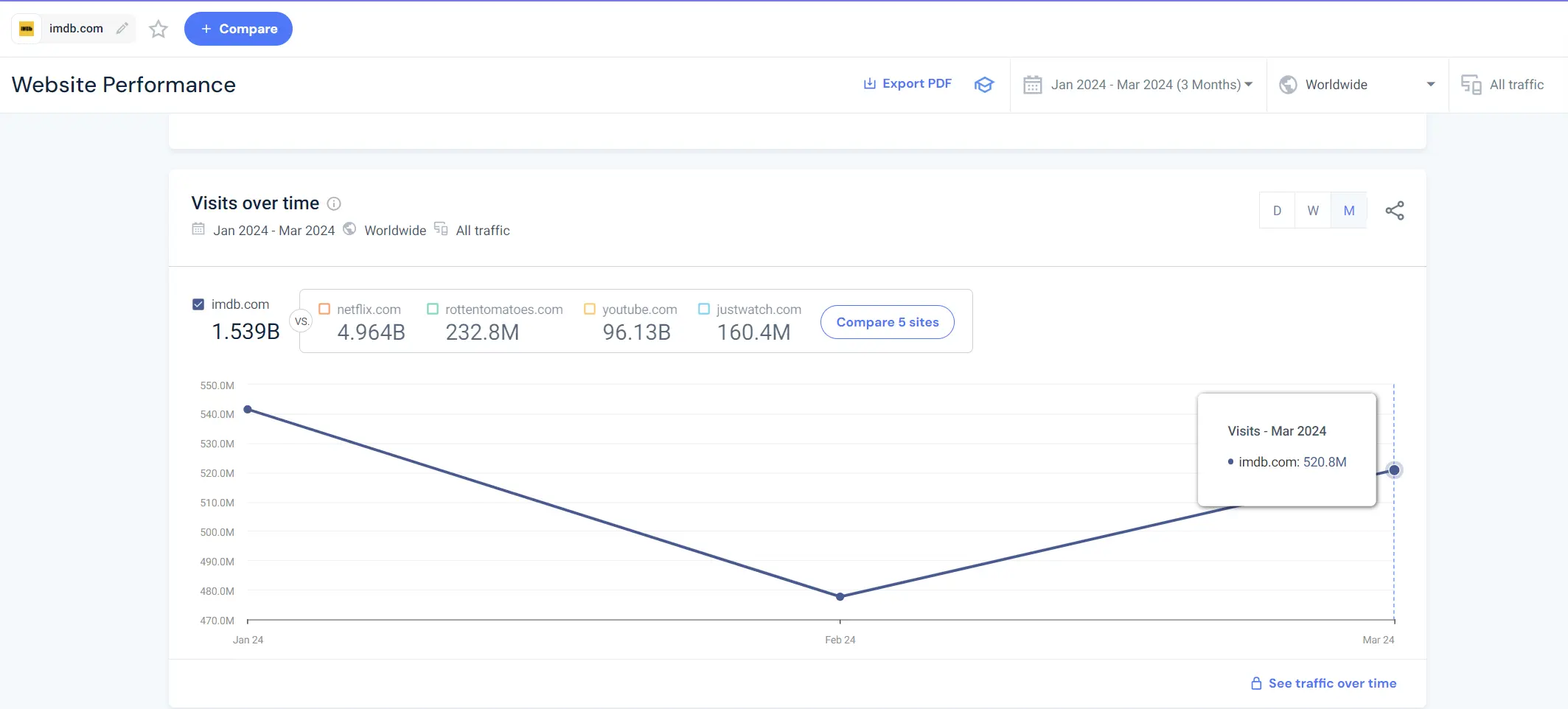
The "Web Market Analysis" report offers insights into traffic share, which can help estimate the potential market size, total unique visitors, and seasonal trends.
These features are available to users on paid plans starting at $149.
ChatGPT for Data Analysis
While GPT Chat doesn't provide real-time data yet, it is a powerful tool for data processing. Here are a few ways it can be useful:
- Report generation. GPT Chat can automatically generate reports based on input data, and even visualize it (with specific plugins).
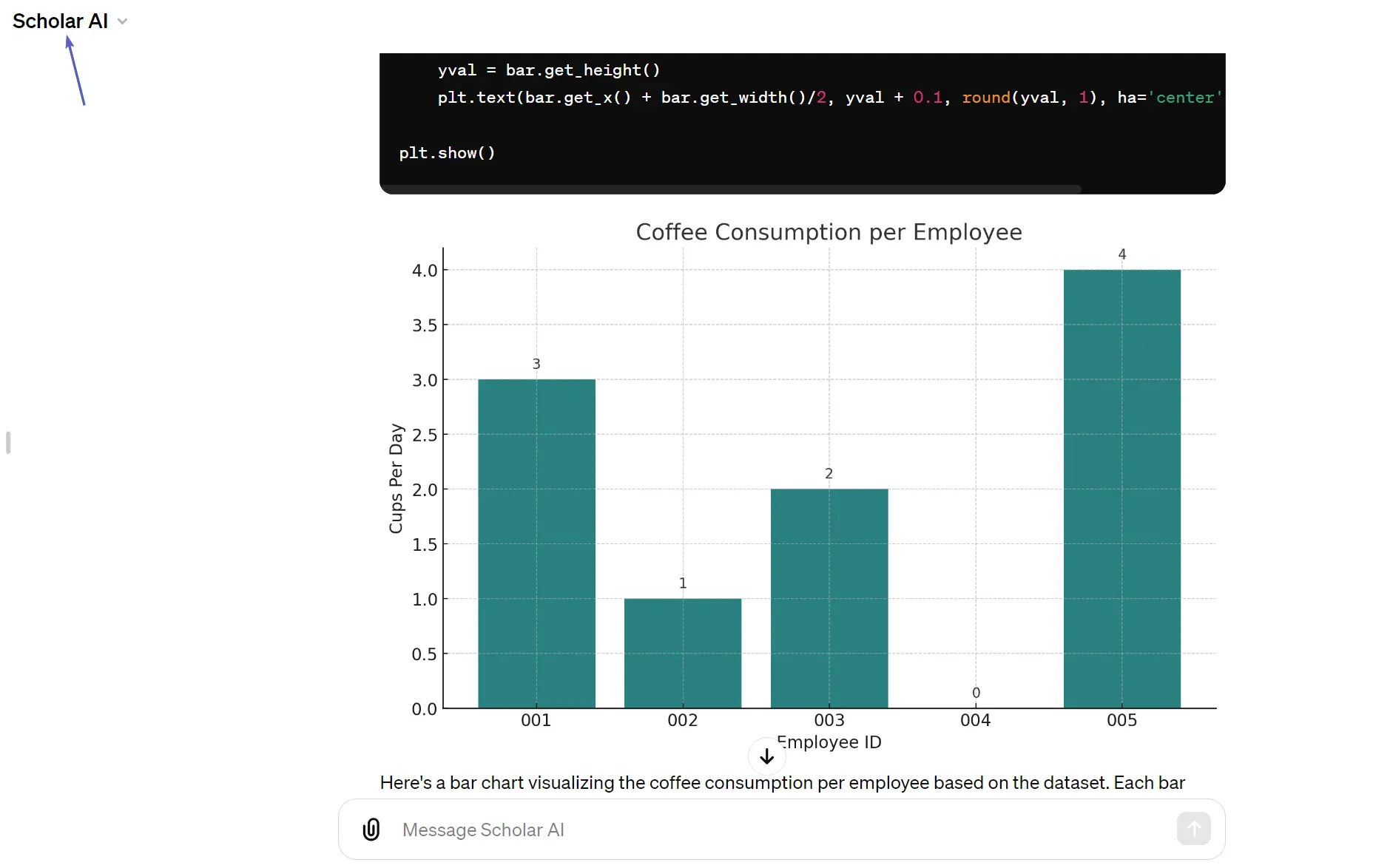
- Trend detection. By analyzing large amounts of text data, GPT Chat can help identify current trends.
- AI recommendations. It can offer insights and suggestions to support well-informed decision-making.
Using GPT and Bing Copilot can significantly simplify data collection and processing, making it more efficient.
Market Finder
Market Finder can help identify promising target markets. This tool evaluates product or service demand through local monthly searches, market trends, per capita income, and even suggested Google Ads bids.
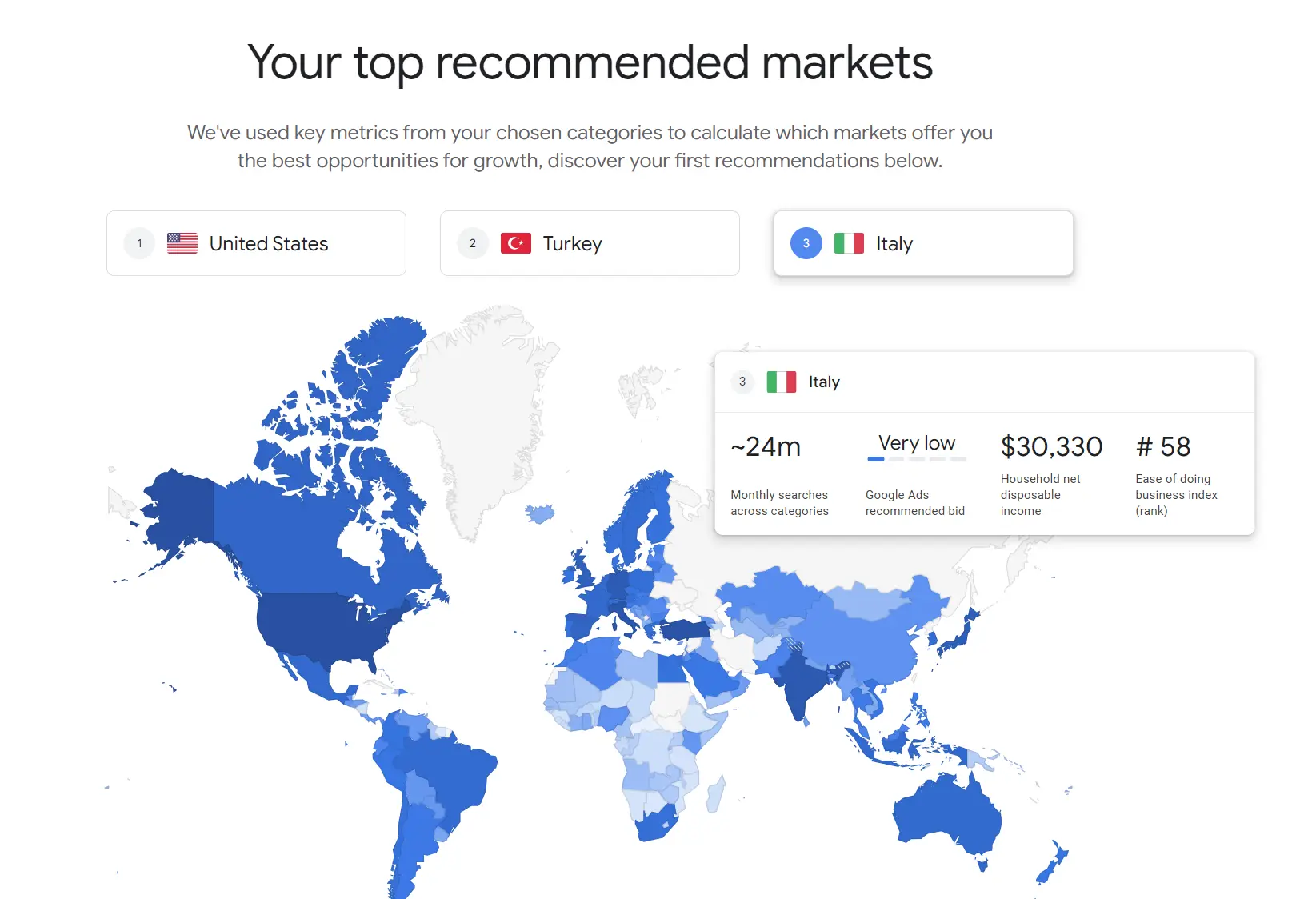
You can then generate a report on up to three target markets and review the online profile for each. This helps tailor your strategy for each specific region.
Data Collection
Data collection methods can be quantitative or qualitative, depending on the market research goals and hypotheses.
- Quantitative methods often involve standardized tools, such as surveys or online forms, allowing statistical analysis to identify trends and patterns.
- Qualitative methods include interviews, focus groups, observations, and text analysis. These methods gather deeper, descriptive insights, which can be analyzed through content or thematic analysis to uncover meaningful insights.
When collecting data, ethical practices, such as obtaining participant consent, safeguarding confidentiality, and responsibly storing and presenting the data, are essential.
Data Analysis
Analyzing results involves statistical analysis, trend identification, and comparing existing data and theories. Present findings objectively, clearly indicating whether hypotheses are confirmed or refuted. Focus on relevant competitors and newcomers in your industry to gauge your competitiveness.
Consider how to visualize the collected data effectively. Below are common types of charts and their uses:
Tools like Google Looker Studio, Google Sheets, and Tableau can help visualize these results effectively.
Reporting and Insights
Develop strategies to help your business adapt to market changes based on your findings. This might include launching new marketing campaigns, adjusting products or services, or exploring new sales channels.
You can also refine existing marketing strategies, assess growth prospects, or seek potential investors.
Remember that market analysis is an ongoing process that requires regular updates and adjustments. Using various research methods and techniques will help you make well-informed decisions.
Common Mistakes in Market Research
To conclude, here are some typical mistakes researchers should avoid:
- Bias: Don't assume you know your target audience without research
- Poor structure: Present all data and results with clear visualizations
- Misinterpretation: Double-check your research to avoid false perceptions
- Limitations: Acknowledge constraints and suggest directions for future research
- Lack of real-world examples: Use case studies to simplify understanding
- Isolation: Compare your findings with similar studies and observations from other sources. Cross-check data, but consider each industry's unique advantages.
Good luck with your research!
Unlock Market Insights with Serpstat!
Start Your Free 7-Day Trial
Discover More SEO Tools
Domain Analysis Tools
SEO Domain Analysis – gain insights into your website's strengths and weaknesses
URL Inspection Tool
Uncover hidden SEO opportunities with our powerful URL Inspection Tool
Keyword Rank Checker
Google Keyword Rankings Checker – gain valuable insights into your website's search engine rankings
Competitor Website Analytics
Complete analysis of competitors' websites for SEO and PPC
Recommended posts
Cases, life hacks, researches, and useful articles
Don’t you have time to follow the news? No worries! Our editor will choose articles that will definitely help you with your work. Join our cozy community :)
By clicking the button, you agree to our privacy policy.
